Weather Teaching Resources
Browse printable weather worksheets, activities, science vocabulary resources, experiments for kids, resources about floods and natural disasters and more ideas for teaching students in primary school about the weather outside your classroom and around the world.
This collection of curriculum-aligned weather teaching resources was created by teachers with teachers in mind. That means every printable and digital resource has been carefully checked by a member of our expert teacher team to ensure it's classroom-ready, so you save time on your lesson plans!
Looking to get started on the weather, or just need more ways to make this science topic more engaging in your classroom? Read on for a primer from our teacher team!
What Is Weather? A Kid-Friendly Definition
When it comes to defining weather for students, here's a kid-friendly definition you can use to explain what weather is:
Weather refers to the conditions in the Earth's atmosphere, such as temperature, wind, precipitation and cloudiness. The weather outside your classroom or home is affected by many things, including the amount of sunlight reaching the Earth's surface, the rotation of the Earth and the presence of water vapour in the atmosphere.
Weather can change rapidly, and it can be unpredictable, so it's important to stay informed about current weather conditions and be prepared for different types of weather.
What Is Weather Science?
Meteorology — also known as weather science — is the study of the Earth's atmosphere and the weather conditions that occur within it. This includes studying temperature, air pressure, wind, precipitation and other atmospheric phenomena.
Weather scientists known as meteorologists use a variety of tools, such as satellites, radar and weather balloons, to collect data about the atmosphere and predict what the weather will be like in the future. These predictions are called weather forecasts and help us decide what to wear or how to plan for outdoor activities that might be affected by rain or excessive heat.
Weather science isn't just important for telling us what to wear, however! It helps us prepare for extreme weather events, provides important information for transportation and aviation safety and helps scientists better understand the Earth's climate.
Students can act as amateur meteorologists as they learn to record weather information to keep track of what is going on outside of your classroom, including relative temperatures such as hot or cold, clear or cloudy, calm or windy and rainy or icy!
Is Climate the Same as Weather?
The two words are often used interchangeably, but it's important to impress upon your students that weather and climate are two very different things!
Weather, as we already explained, deals with the conditions of Earth's atmosphere at any given time. It can be termed as the short-term atmospheric conditions of a specific place — such as temperature, wind, humidity, precipitation and cloud cover — over a short period of time, usually a few hours or days.
Climate, on the other hand, is a look at those conditions over a long period of time. It can be termed as the long-term average weather patterns of a specific region or location, usually over a period of at least 30 years.
What Do Kids Need to Learn About Weather?
Weather is a broad, broad topic — to say the least! So what's going on during primary school weather lessons? Before kids move on to high school, they should have a basic understanding of the different elements that make up the weather and how they interact with each other. They'll also need to understand weather forecasts and how to use them to plan.
With that in mind, here are the biggest topics to cover:
- Temperature — Learning how to measure temperature using a thermometer and how temperature changes over time, as well as the difference between Celsius and Fahrenheit, are part of weather lessons at this stage of kids' education.
- Precipitation — Young students learn about different types of precipitation — such as rain, snow, sleet and hail — and how they form in the atmosphere.
- Wind — Wind direction and speed, how wind is measured and how it affects the weather should all be covered before kids head off to secondary school.
- Clouds — From cumulus to strato-form, students learn about the different types of clouds and how they form plus how clouds affect the weather.
- Extreme Weather — Extreme weather events such as hurricanes, floods and thunderstorms are typically part of the science curriculum at this stage, and depending on where you are teaching instruction on how to stay safe during these events may well be on the agenda.
- Plus Plan

The Earth's Seasons Teaching Slides
Use this fact-packed digital teaching resource to show your students the names and characteristics of Earth’s four seasons.
- Free Plan

Seasons in the Southern Hemisphere and Northern Hemisphere Poster
Use these posters in the classroom to give students a visual representation of the seasons (and which months they inlcude in both the Northern Hemishpere and the Southern Hemisphere).
- Plus Plan
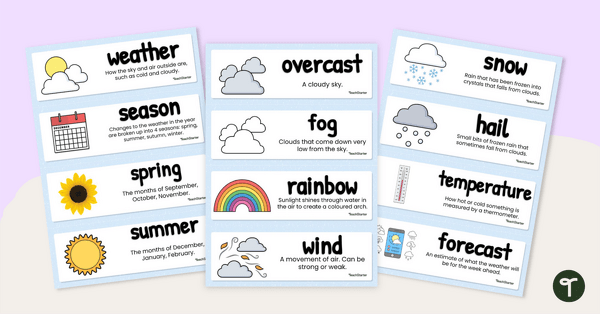
Seasonal Changes Words and Definitions Display
Display this easy-to-read seasons word set in your classroom as you investigate seasonal changes with your young students.
- Plus Plan
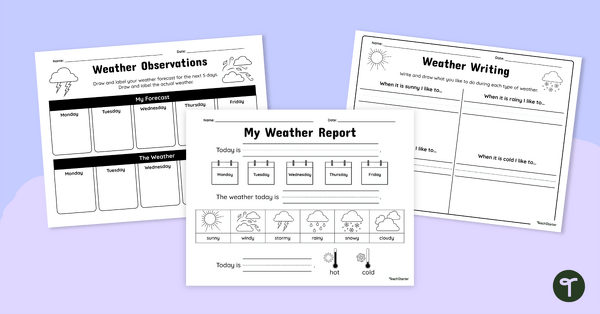
Wonderful Weather – Foundation and Year 1 Worksheets
Make weather predictions, create a weather report and write about the weather with this set of printable worksheets.
- Plus Plan
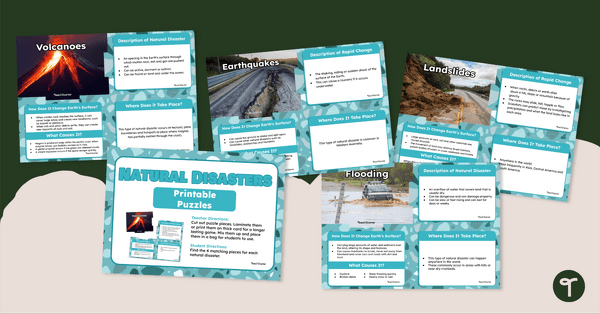
Natural Disasters – Printable Puzzles
Match pictures and facts of various natural disasters with this set of printable science puzzles.
- Plus Plan
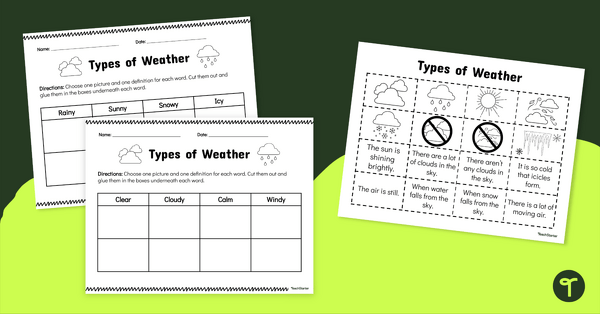
Types of Weather – Cut and Paste Worksheet
Use this cut-and-paste science worksheet to match a picture and description with each weather condition.
- Plus Plan
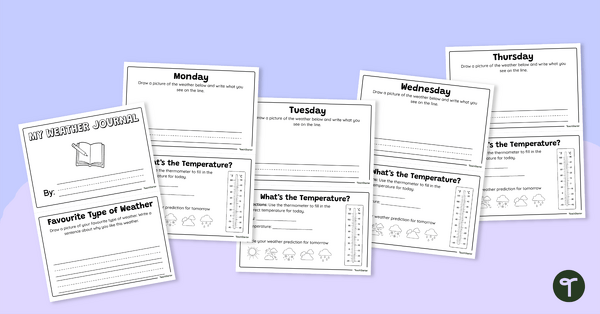
Weather Journal – Mini-Book
Draw and write about the current weather conditions, record weather data and predict what the following day’s forecast will be with this printable mini-book.
- Plus Plan
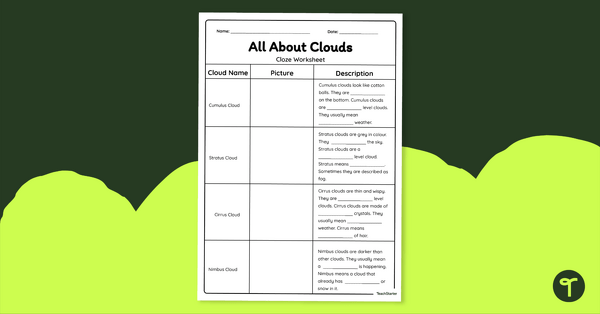
All About Clouds - Cloze Worksheet
Strengthen student understanding of different cloud types with this cloze reading worksheet.
- Free Plan
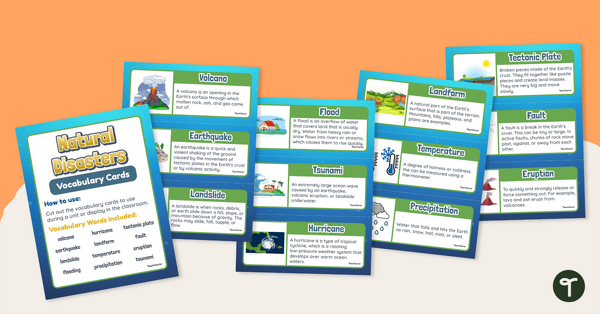
Natural Disasters - Illustrated Vocabulary Display
Reinforce science vocabulary in your classroom with this set of illustrated and annotated natural disaster word wall cards.
- Plus Plan
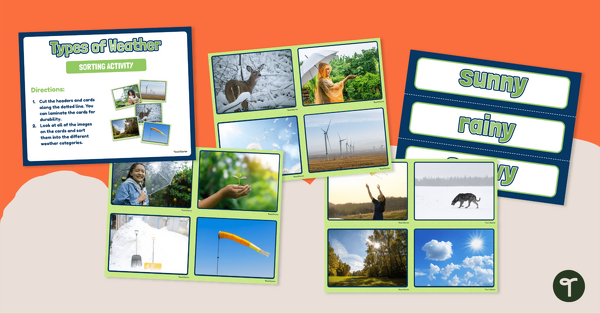
Types of Weather – Sorting Activity
Observe and categorise pictures showing different types of weather with this sorting activity.
- Free Plan
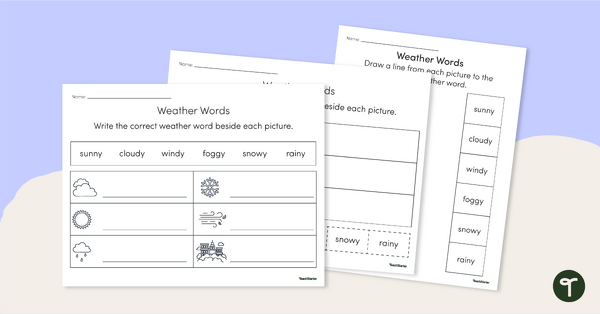
Weather Words – Worksheet Pack
A set of worksheets to use when teaching weather vocabulary to your students.
- Plus Plan
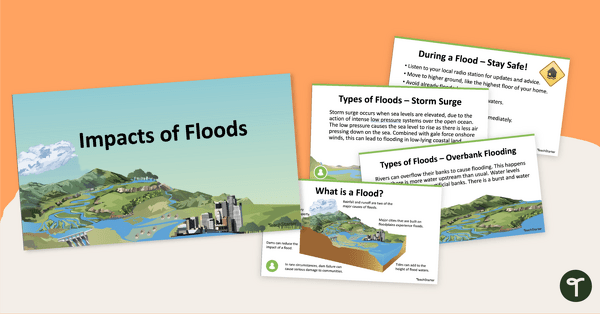
Impacts of Floods PowerPoint
A 17-slide editable PowerPoint template about floods and their impact on communities.
- Plus Plan
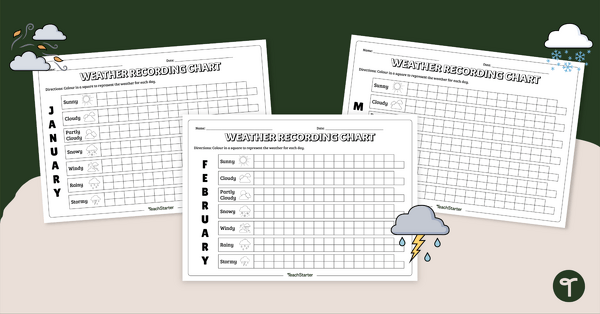
Printable Weather Recording Charts
Use these printable weather charts to graph and analyse the weather for each month.
- Plus Plan
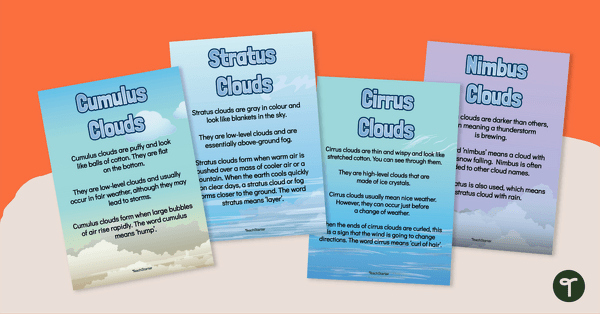
Types of Clouds – Poster Pack
Learn about nimbus, cirrus, stratus, and cumulus clouds with this set of 4 printable posters.
- Plus Plan
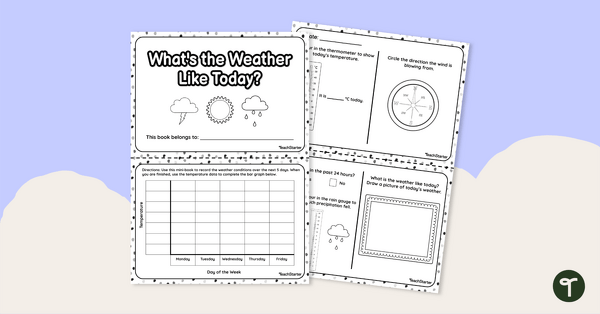
What's the Weather Like Today? – Mini-Book
Measure, record and graph weather information with a printable mini-book.
- Plus Plan
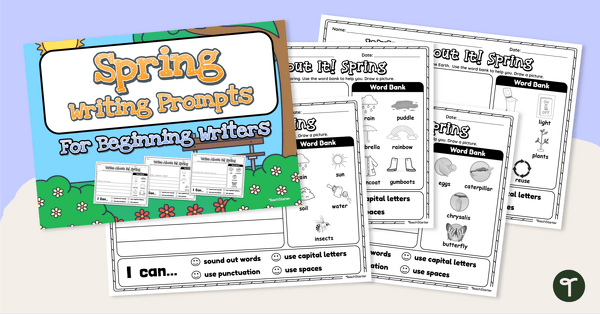
Spring Writing Prompts for Beginning Writers
Use the season of spring to inspire writing in your early years classroom.
- Plus Plan
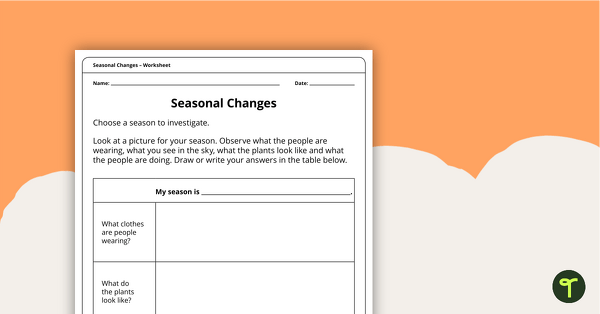
Seasonal Changes Worksheet
A worksheet the explores the observable features of the seasons.
- Plus Plan
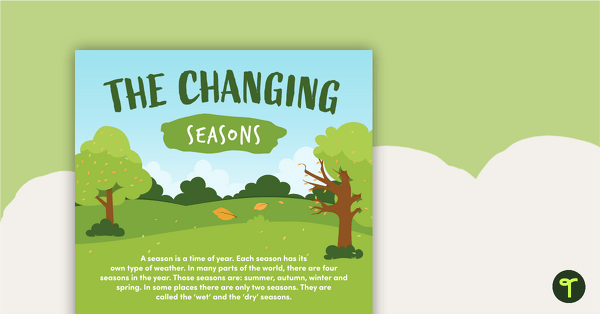
The Changing Seasons – Worksheet
Read and write about the changing seasons with a comprehension passage and worksheet.
- Free Plan
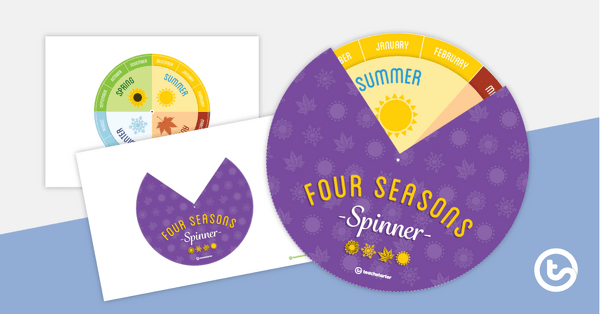
Four Seasons Spinner Activity — Southern Hemisphere
Print a four seasons spinner activity to expand students' understanding of the different times of the year.
- Free Plan
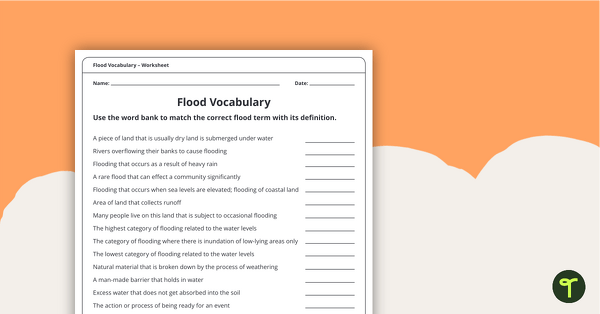
Flood Vocabulary Task
A vocabulary task for students to use when demonstrating their understanding of the impact of floods in Australia.
- Plus Plan
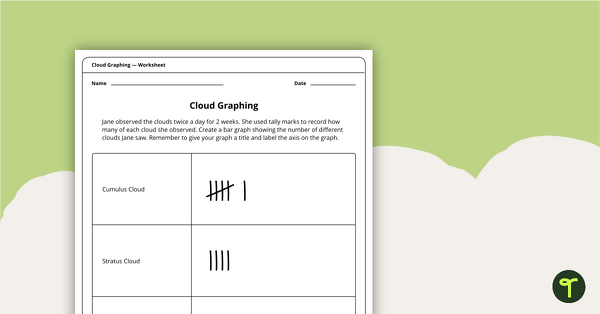
Cloud Graphing Activity
A worksheet to use when graphing cloud observations.
- Plus Plan
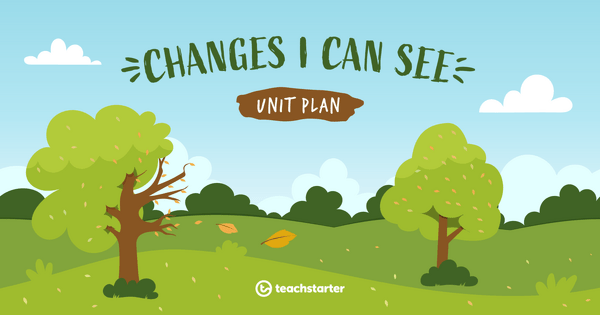
Changes I Can See - Aboriginal and Torres Strait Islander Perspectives
- Plus Plan
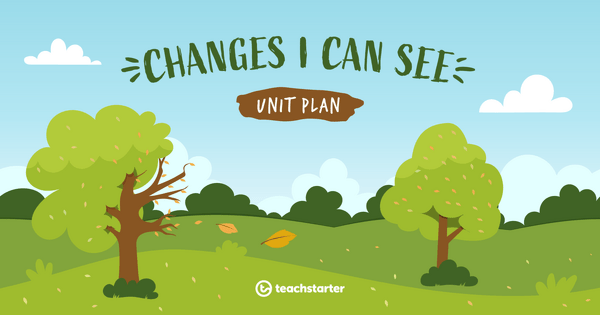
Seasons of Change
- Plus Plan
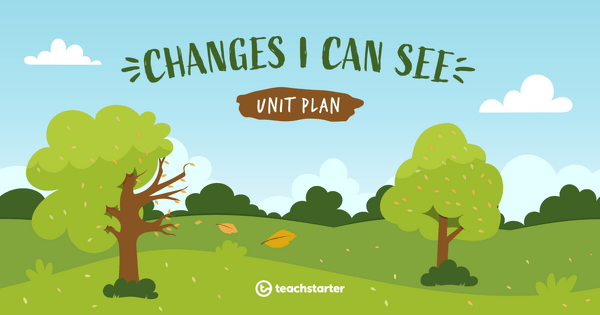
How About This Weather?
- Plus Plan
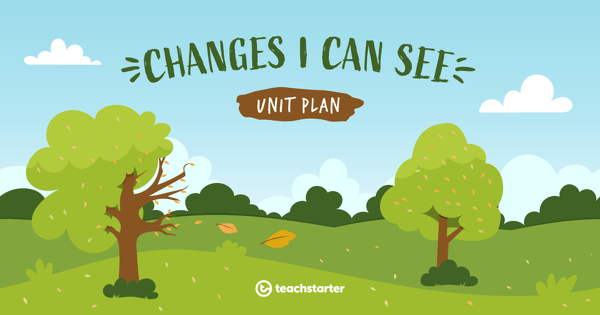
Do You See What I See?